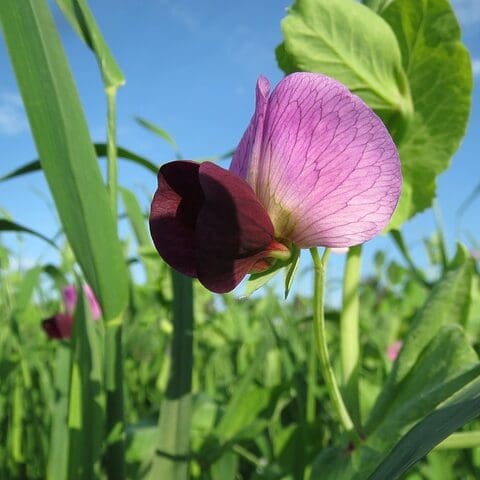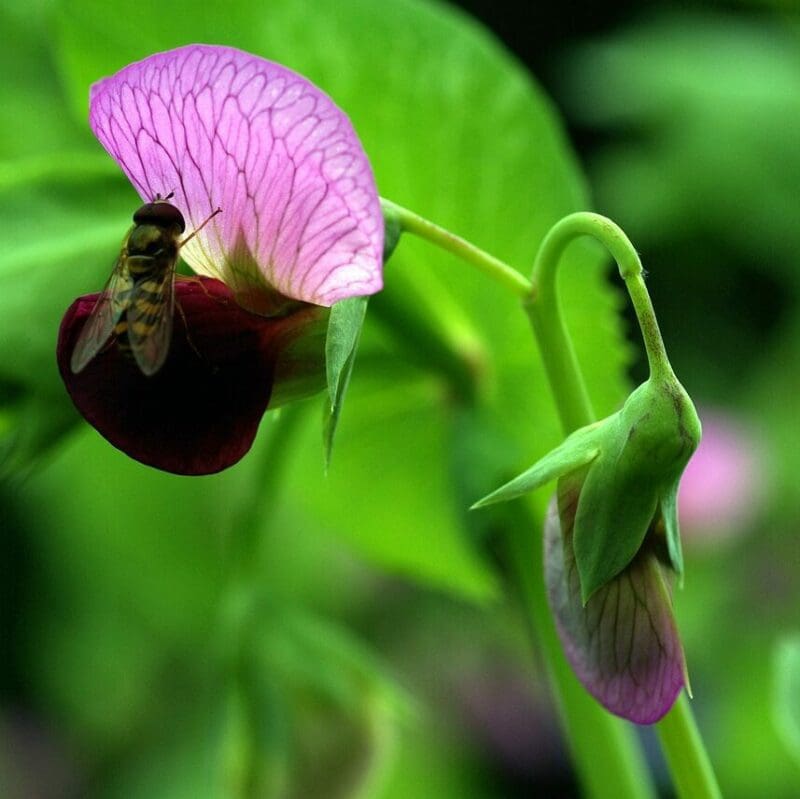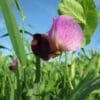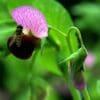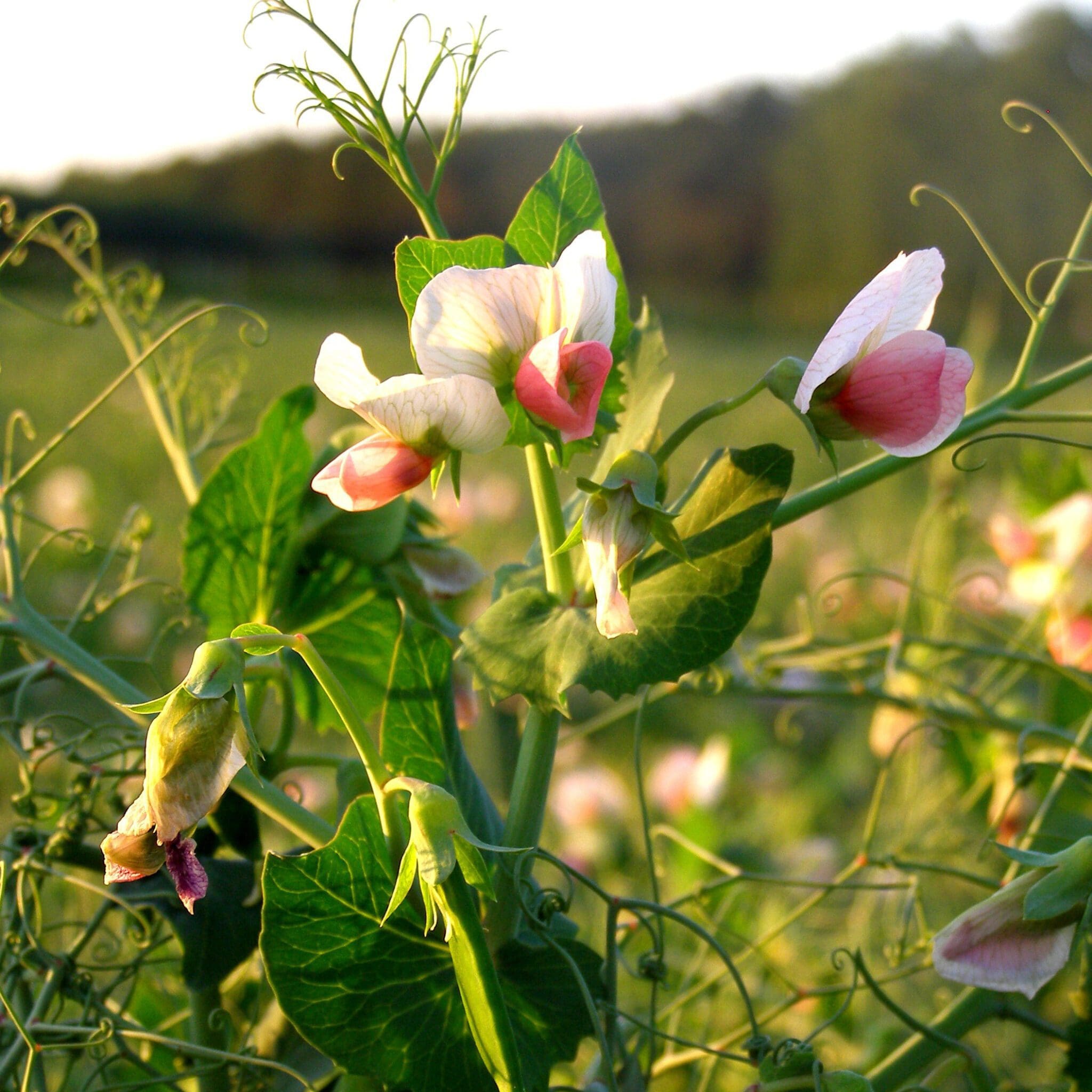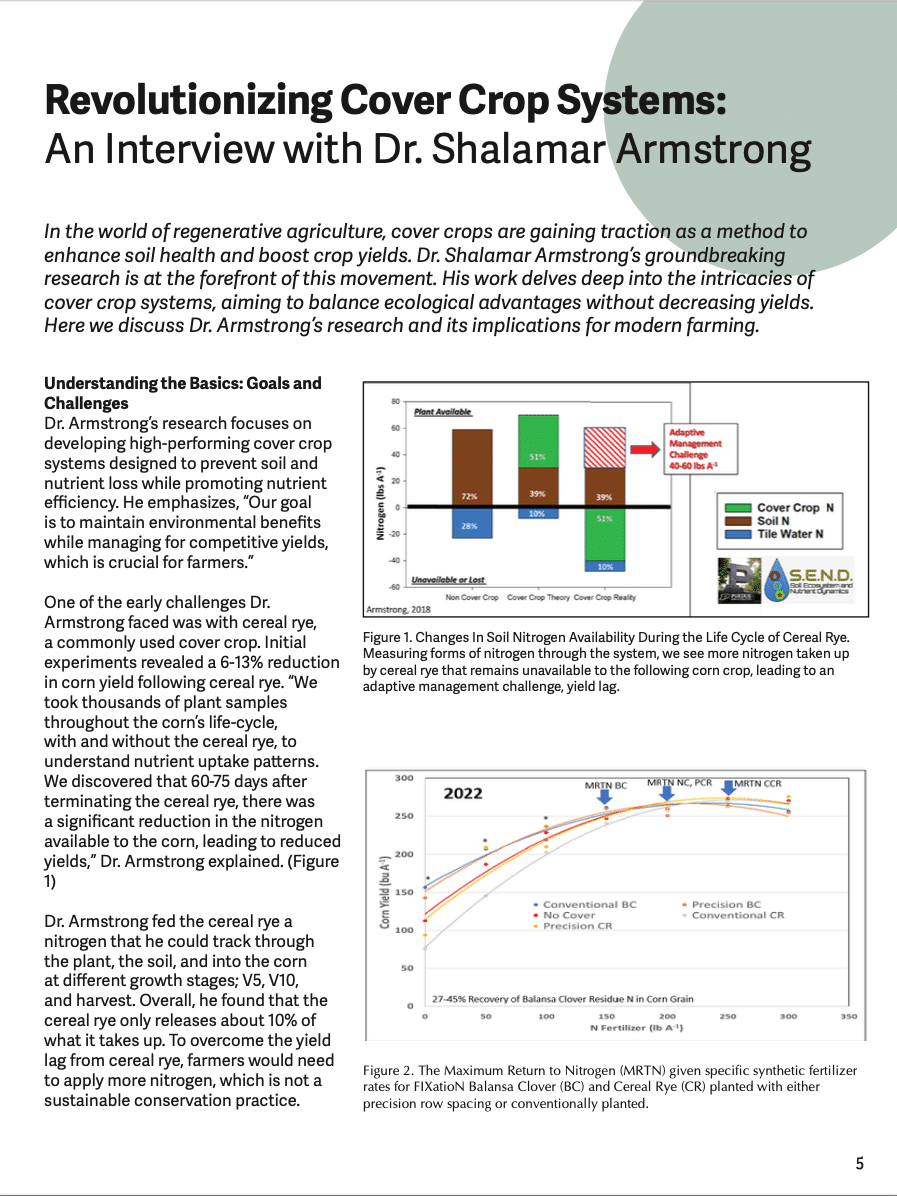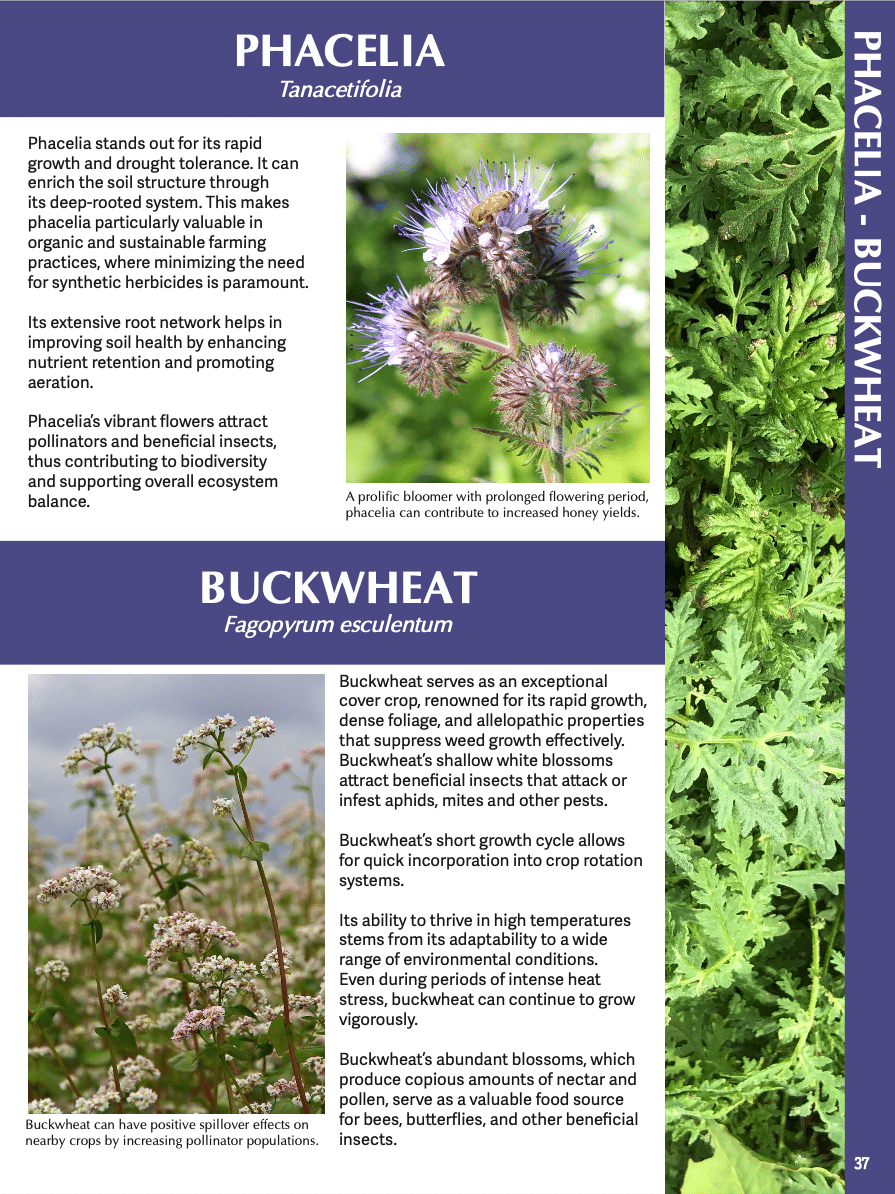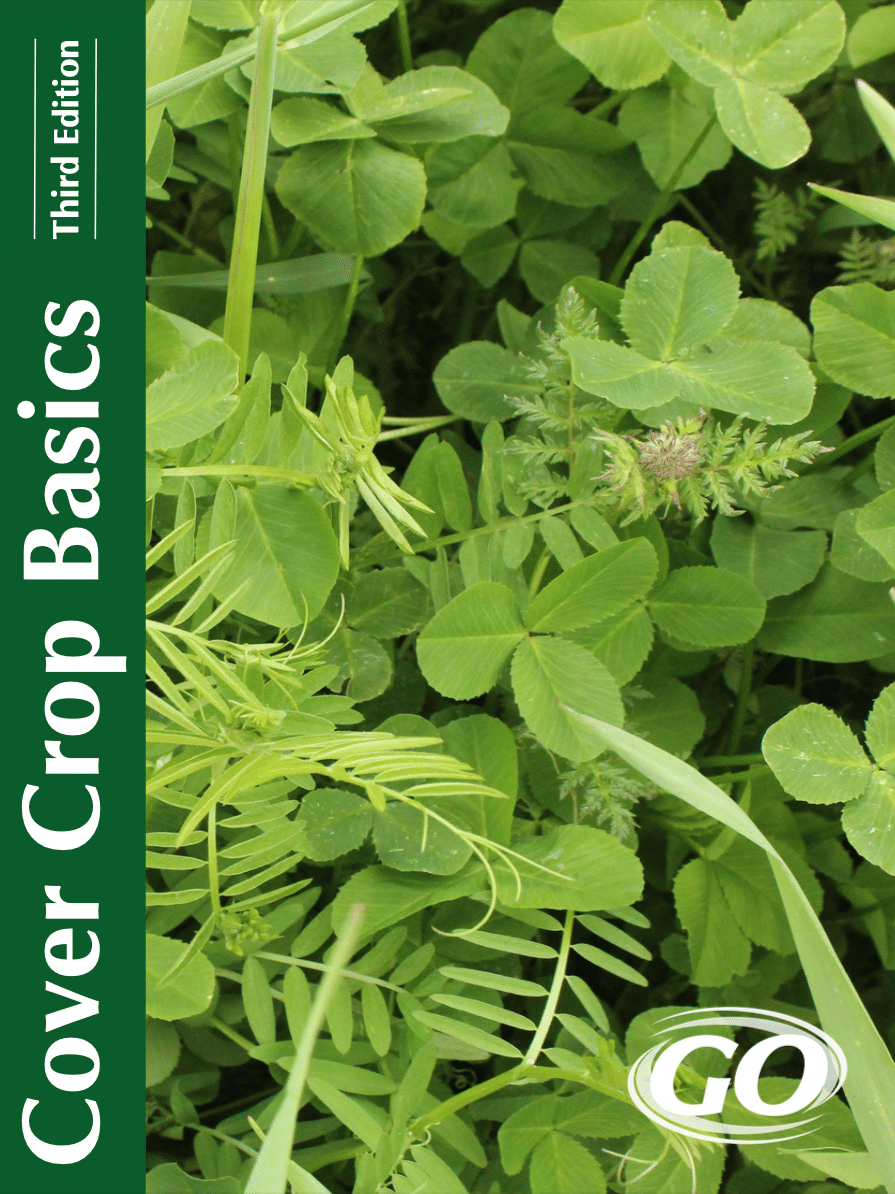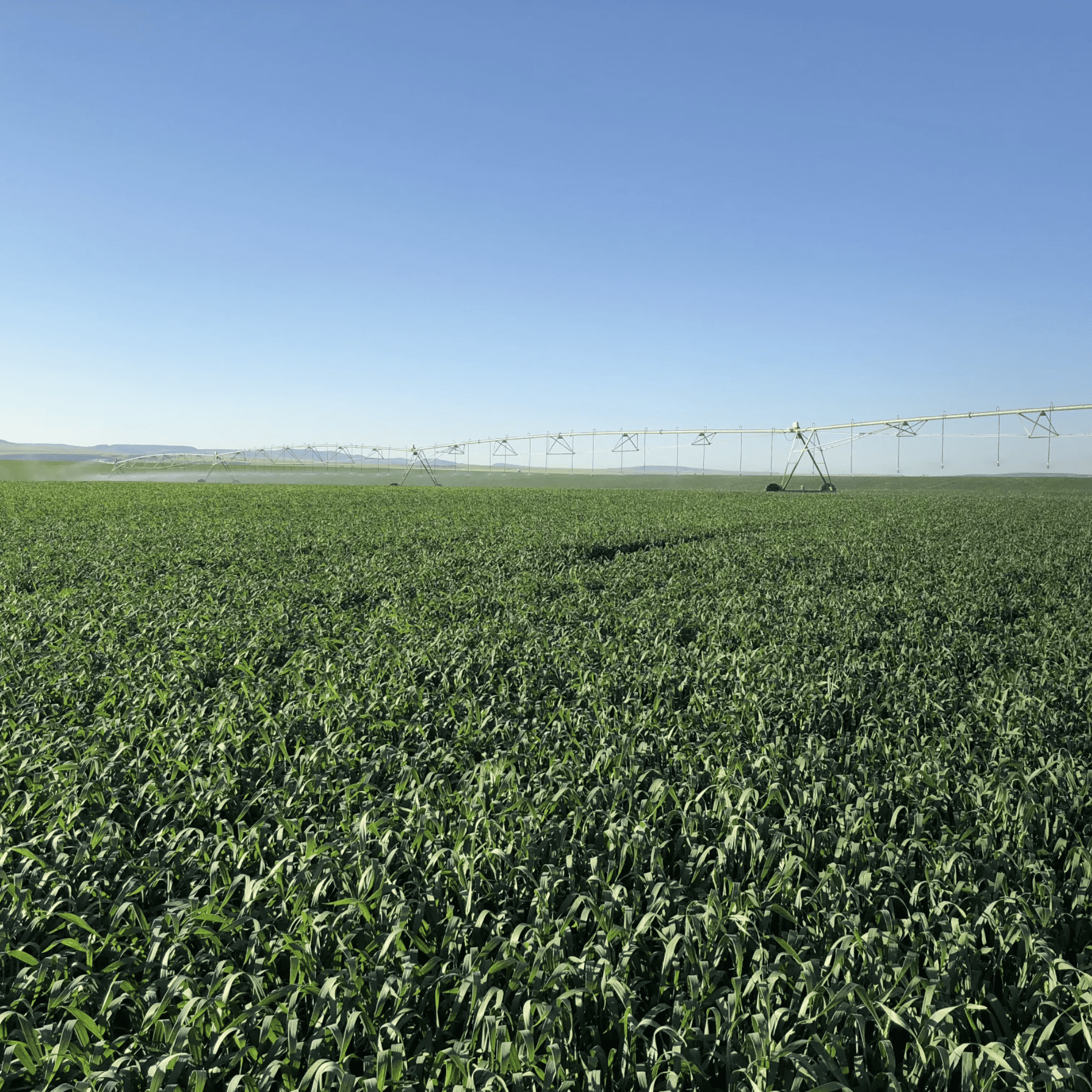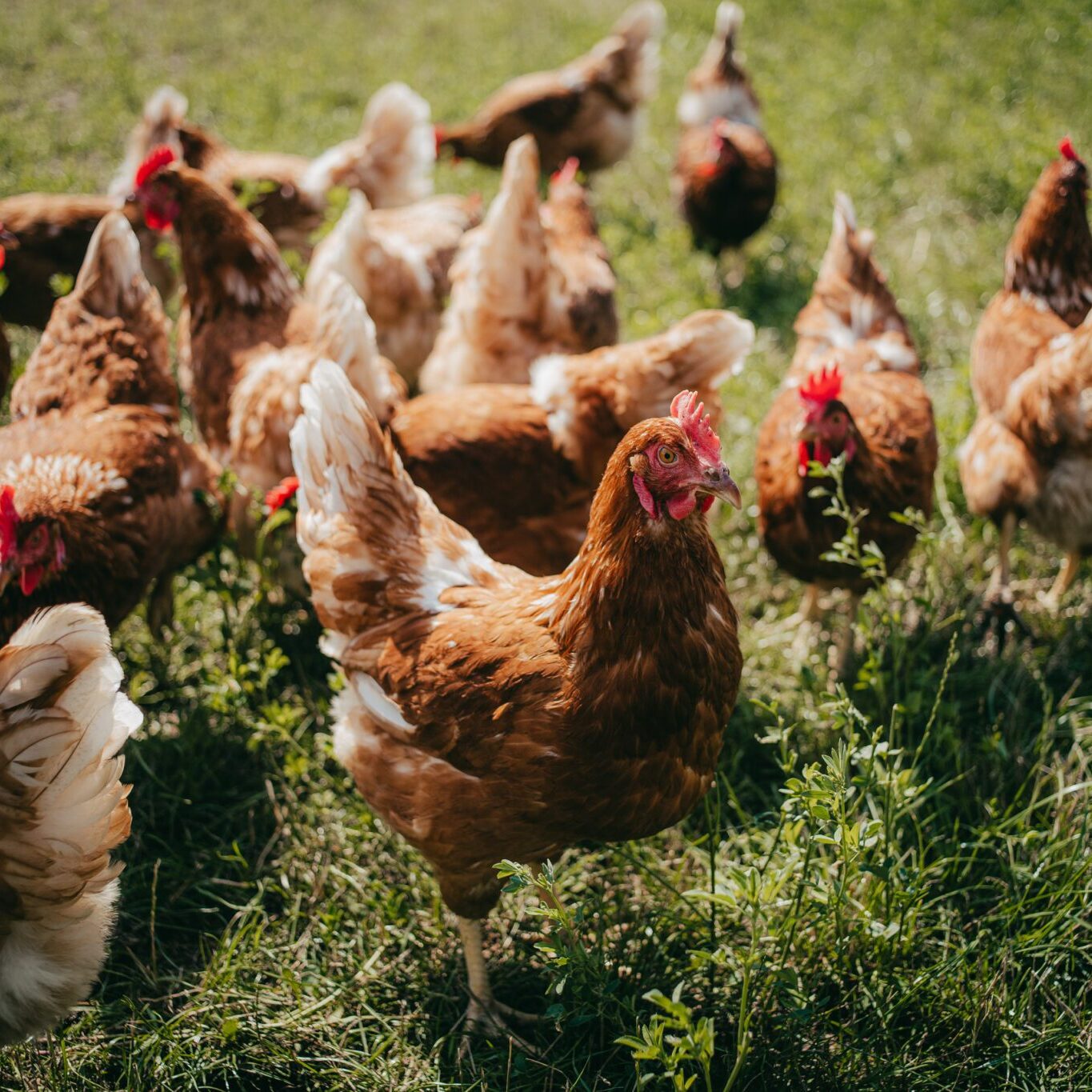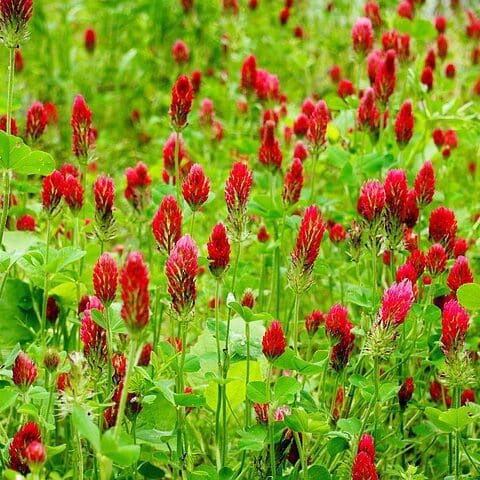Winter Peas
Winter Peas or “Field Peas”
- Excellent source for good fall ground cover
- Good for weed suppression
- Provides high quality forage that can be hayed or grazed
- Excellent companion crop when planted with small grain crops
NOT FOR SALE ONLINE. PLEASE CALL FOR AVAILABILITY.
Min. to Max. Annual Precipitation
48in.
Average Max. Height
Winter Peas are an excellent source for good fall ground cover and weed suppression. Provides high quality forage that can be hayed and grazed. Excellent companion crop when planted with small grain crops. They prefer cool moist soil conditions and do not perform well in hot dry conditions. This annual legume are low growing, viny, and have 2 to 4 foot long, thin, hollow, stems with a purple/reddish-pink flower. Great for winter hardiness.
Winter Peas: Pisum sativum subsp. arvense
Winter peas, or “field peas”, are an excellent source for good fall ground cover and weed suppression that also provides high quality forage that can be hayed or grazed. They are an excellent companion crop when planted with small grain crops. Winter peas can fix as much as 75-100 # N/acre. They prefer cool moist soil conditions and do not perform well in hot dry conditions. This annual legume are low growing, viny, and have 2 to 4 foot long, thin, hollow, stems and purple or reddish-pink flowers. As their name would suggest, winter peas have great winter hardiness and can be successfully grown in the grain belt states of the Midwest, the Mid-Atlantic states, and the Great Plains and inter-mountain regions of the west.
Planting Instructions:
50 lbs/acre drilled
70 lbs/acre broadcast
25-30 lbs/acre drilled
35-40 lbs/acre broadcast
Innocullant: 1/2 to 1 inch: If broadcast, the soil should be tilled lightly to cover the seed.
Ideal Soil: Prefers well-drained soils within a pH range of 6.3-7.0
*** For more info, please click the “Quick Plant Facts” tab above or visit: USDA Plant Guide
Check out our Prosper Plus with Peas Forage Mixture
Cover Crop Basics
An informative, authoritative guide to cover crops. Very comprehensive, and covers all geographic regions of the USA. Published by GO Seed.
Beards, Dwarf Beards and Awnlettes
Making Sense of Grain Beards
What is the difference between “bearded” and “dwarf beard” and “beardless” varieties? How do I choose the one best for me?
The table below will help you visualize the different characteristics of each variety, if they have beards (or not) and why it matters. See our BEARDED GRAINS blog post for additional information.
| Species | Variety | Planting Season | Beard Expression | Comments |
|---|---|---|---|---|
| Oat | Otana | Spring | Beardless | Oats do not have a beard |
| Oat | Monida | Spring | Beardless | Oats do not have a beard |
| Oat | Intimidator | Spring | Beardless | Oats do not have a beard |
| Oat | Monico | Spring | Beardless | Oats do not have a beard |
| Oat | Magnum | Spring | Beardless | Oats do not have a beard |
| Oat | Everleaf™ Falcon Oat | Spring | Beardless | Oats do not have a beard |
| Oat | Everleaf™ 126 Oat | Spring | Beardless | Oats do not have a beard |
| Barley | Vaquero | Spring | Beardless | May express a beard up to 4/10,000 plants (.04%) |
| Barley | Sunstar Double | Spring | Bearded | Bearded forage barley |
| Barley | Claymore | Spring | Bearded | Bearded forage barley |
| Barley | Haymaker | Spring | Beardless | Forage barley |
| Barley | Lavina | Spring | Beardless | Forage barley |
| Barley | Goldeneye | Spring | Bearded | Grain barley |
| Barley | Sunstar Pride | Fall | Bearded | Fall forage barley |
| Barley | Valor | Fall | Beardless | Fall forage barley |
| Barley | Baldwin | Fall | Awnletted | Beard expression if planted after October 15 |
| Triticale | Merlin Max™ | Facultative | Beardless | Forage triticale |
| Triticale | Gunner™ | Facultative | Beardless | Forage triticale |
| Triticale | 131 | Fall | Beardless | Forage triticale |
| Triticale | 141 | Spring | Awnletted | 141 was used facultatively at high elevations |
| Triticale | Luoma | Fall | Awnletted | Forage triticale |
| Triticale | Flex 719™ | Facultative | Awnletted | Forage triticale |
| Triticale | FX 1001 | Fall | Nearly Beardless | FX 1001 may have up to 3% beard expression |
| Triticale | Motley™ | Facultative | Nearly Beardless | Forage triticale |
| Wheat | Jefferson | Spring | Bearded | Hard red grain wheat for milling |
| Wheat | Twin | Spring | Beardless | Soft white forage wheat |
| Wheat | Brundage | Fall | Beardless | Soft white forage wheat |
| Wheat | Ray | Fall | Beardless | Hard Red forage or milling wheat |
| Wheat | Willow Creek | Fall | Beardless | Hard Red forage or milling wheat |
| Rye | Rymin or VNS | Facultative | Bearded | Cereal forage rye |
| Peas | Austrian Winter Peas | Facultative | Beardless | Peas do not have a beard |
| Grain Mixture | Fall Forage Blend | Fall | Beardless | May contain awnletted varieties |
| Grain Mixture | Prosper 3 Grain Forage Mixture | Spring | Beardless | Forage mixture |
| Grain Mixture | Prosper Plus with Peas | Spring | Beardless | Prosper with forage peas added |
Who is Great Basin Seed?
Great Basin Seed is a seed company that specializes in seed sales and consultation for home, ranch, farm, range and reclamation. We have been a leader in the seed industry since 1974.
Our History
We've been in the seed business since 1974.
What We Offer
We offer seed for home, farm, ranch, range and reclamation projects.
Meet the Gang
We have the best employees in the world! We are proud of the work they do, and trust them to serve you!
Right: Company founder Lloyd and his wife Paula Stevens in a wildflower seed production field circa 1977
Quick Plant Facts
| Common Name: | Austrian Winter Peas, Winter Peas or "Field Peas" |
|---|---|
| Scientific Name: | |
| Lifespan: | |
| Origin: | |
| Plant Type: | |
| pH Tolerance: | |
| Seeds per Pound: | |
| Growth Height: | |
| Root Form: | |
| Planting Rate: | |
| Min. Precipitation: | |
| Best Time to Sow: | |
| Max Sowing Depth: | |
| Growth Season: | |
| Sun & Shade Tolerance: | Full Sun |
| Elevation of Occurance: |
